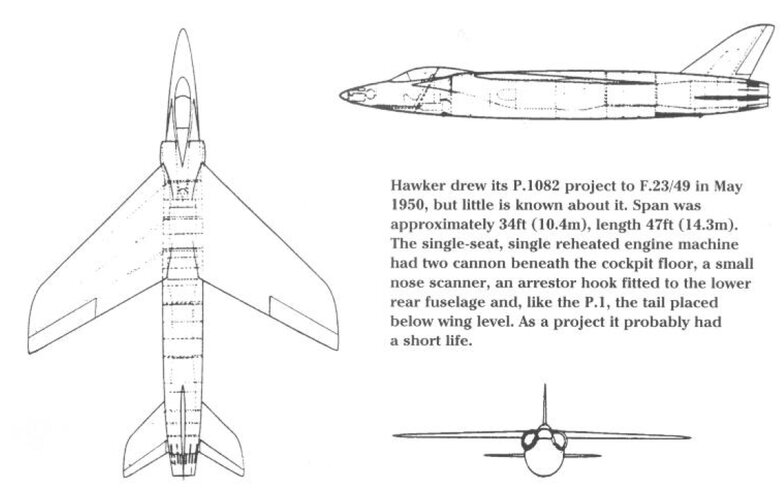- Joined
- 15 July 2007
- Messages
- 4,889
- Reaction score
- 4,554
A neat design.
Single reheated Avon, with what looks like a fully variable exhaust nozzle.
High wing, classic Hawker style swept sort. Structure seems to pass over the engine as a single piece.
Main gear may be in the wing, but it's not clear and the fusilage seems big enough to squeeze them in.
Inlets a bit odd, but well clear of cannon mounted beneath the nose. So little danger of gases entering the inlets.
Low tail..well relative to the high wing that is.
All in all, quite decent and drawn up to F23/49 in May 1950.
Almost the plane Hawkers should have built.
(Actually a real project, mentioned in the designations section https://www.secretprojects.co.uk/threads/hawker-designation-list.833/ ,
so move to this section)
Single reheated Avon, with what looks like a fully variable exhaust nozzle.
High wing, classic Hawker style swept sort. Structure seems to pass over the engine as a single piece.
Main gear may be in the wing, but it's not clear and the fusilage seems big enough to squeeze them in.
Inlets a bit odd, but well clear of cannon mounted beneath the nose. So little danger of gases entering the inlets.
Low tail..well relative to the high wing that is.
All in all, quite decent and drawn up to F23/49 in May 1950.
Almost the plane Hawkers should have built.
(Actually a real project, mentioned in the designations section https://www.secretprojects.co.uk/threads/hawker-designation-list.833/ ,
so move to this section)
Last edited by a moderator:

